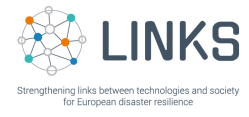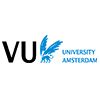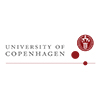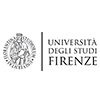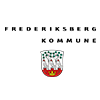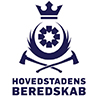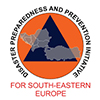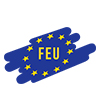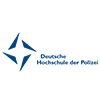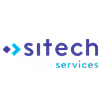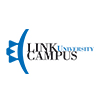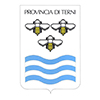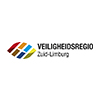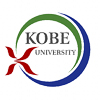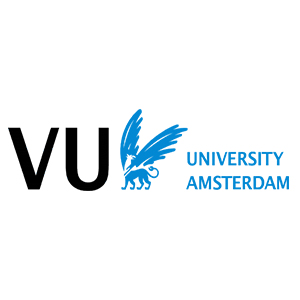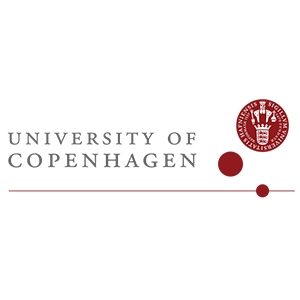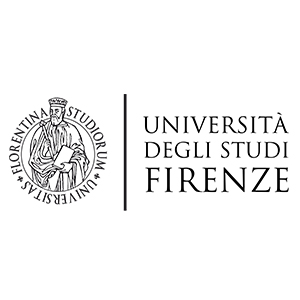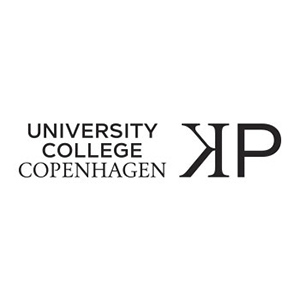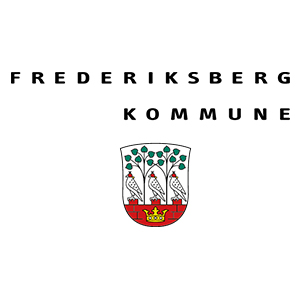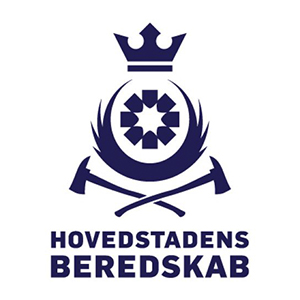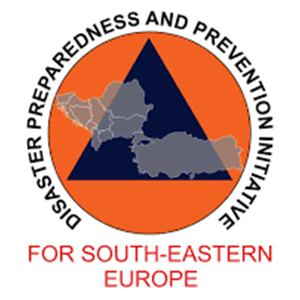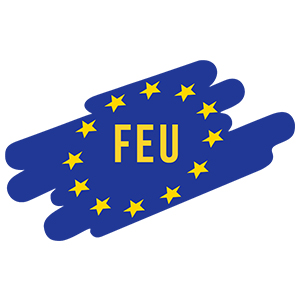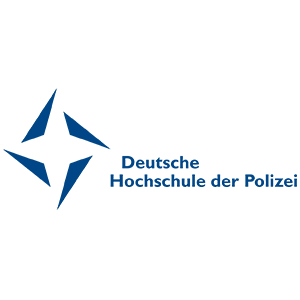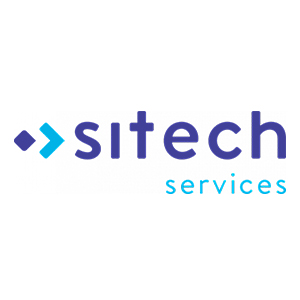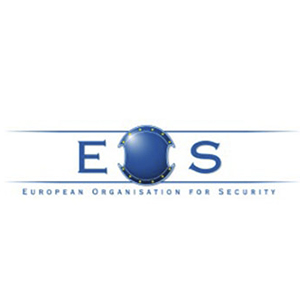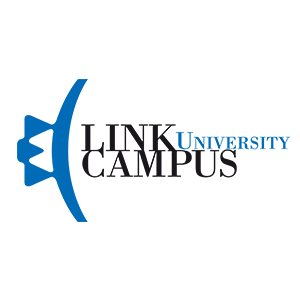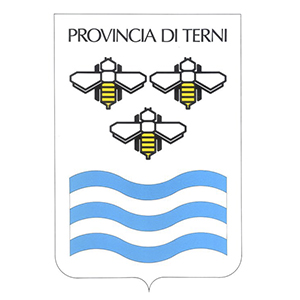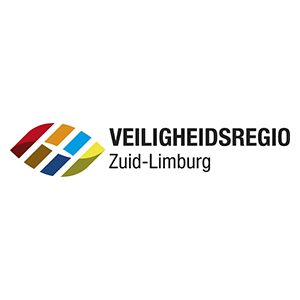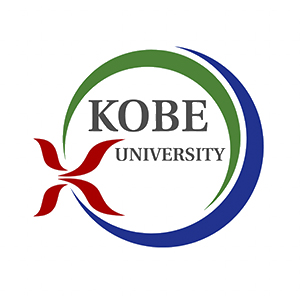The LINKS consortium brings together the expertise of 15 participating organizations and 2 associated partners across Europe (Belgium, Denmark, Germany, Italy, Luxembourg, the Netherlands) and beyond (Bosnia & Herzegovina, Japan).
The LINKS partners have a wide range of experience and expertise in the areas of disaster management and governance. They represent EU emergency management and security organisations and networks (EOS – European Organization for Security, FEU – Federation of the European Union Fire Officer Associations a.s.b.l.) local and national first responder, civil protection and law enforcement agencies (DPPI SEE – Disaster Preparedness and Prevention Initiative for South Eastern Europe, HBR – Hovedstadens Beredskab, PDT – Provincia di Terni Servizio Protezione Civile, VRZL – Veiligheidsregio Zuid-Limburg, SIC – safety innovation center e.V.), citizens, public authorities and civil society organizations (FRB – Frederiksberg Kommune, SCIT – Save the Children Italia ONLUS), business communities and industry (ST – Sitech Services of Chemelot, EOS – European Organization for Security), and research institutions (DHPol – Deutsche Hochschule Der Polizei, LCU – Link Campus University, SIC – safety innovation center e.V., UCC – Københavns Professionshøjskole, UCPH – Københavns Universitet, UNIFI – Università degli Studi di Firenze, VU – Vrije Universiteit Amsterdam).
Vrije Universiteit Amsterdam (VU) – Netherlands
Faculty of Social Sciences at the VU is a broadly disciplined faculty wherein the classic disciplines of political sciences, sociology and cultural anthropology and the modern terrains of organization, communication sciences and public administration have their own places. The research conducted in the LINKS project is housed within the Department of Organization Sciences and the Institute for Societal Resilience, which aims to improve the understanding of the fundamental problems of societies with a multidisciplinary approach. In particular, the VU research team specializes in approaches to crisis management and disaster studies. VU will be responsible for the overall coordination and management of the LINKS project. VU is also the Work Package Leader of WP5 and WP6, which are concerned with the development of the LINKS Framework, a set of best practices of methods, tools and guidelines around the uses of social media and crowdsourcing in disasters. VU and LINKS are also connected with related EU projects including BuildERS, RESILOC, Engage, HERoS and DRIVER+.
Københavns Universitet (UCPH) – Denmark
The University of Copenhagen is one of the largest institutions of research and education in Scandinavia and offers a strong international environment and is therefore able to attract academic staff from all over the world. UCPH will embed the project within two overlapping networks: The Global Health Section at the Department of Public Health and the Copenhagen Center for Disaster Research (COPE). The first takes an interdisciplinary approach to global health and covers a wide range of topics including social media and global health, disaster and emergency health, climate change and health; the latter brings together disaster researchers from all disciplines, and creates an umbrella structure for interdisciplinary research activities and projects.UCPH will be involved in the work of several work packages but is responsible for WP3 which concerns building a knowledge domain on disaster management processes (DMP).
Università degli Studi di Firenze (UNIFI) – Italy
UNIFI is one of the largest organisations for research and higher education in Italy and has been ranked among top Italian Universities for the distribution of national research funds, as well as one of the most active Italian universities in terms of European projects.
UNIFI participates to LINKS as research partner and it is Work Package Leader of WP2, responsible for the development of the disaster risk perception and vulnerability (DRPV) methodology. Moreover UNIFI has the responsibilty to develop the LINKS Ethics and Societal Impact Strategy (T1.5) and to monitoring it throughout the project.
The research conducted in the LINKS project is housed within two departments: the Department of History Archaeology Geography Fine and Performing Arts (SAGAS), and the Department of Earth Sciences (DST), that will contribute to the project with their experience in the fields of social geography, engineering geology, and disaster studies.
In the first department, one facility in particular is involved with a leading role in the LINKS activities in charge to UNIFI: the Laboratory of Social Geography (LaGeS). LaGeS boasts solid experience in developing urban and regional plans, employing a wide range of research approaches, such as quali-quantitative analysis of social change, digital mapping, big data, and sentiment analysis.
On the other side, DST will contribute with its large experience in remote sensing monitoring like satellite surveillance system; geo-hydrological risk evaluation, prediction and monitoring; vulnerability evaluation, coping capacity, and resilience improvement.
safety innovation center gGmbh (SIC) – Germany
safety innovation center (SIC) is a non-profit research company that aims to promote innovations in the field of civil safety. SIC cooperates with the District of Paderborn, the City of Paderborn and the Paderborn University and is supported by an advisory board. SIC investigates and complements innovative concepts in the field of digitisation for civil safety, with a focus dedicated to human-centered design. In order to increase civil safety, SIC’s goal is to make the opportunities arising from digitisation usable and minimise its risks.
The core research focus: digital supported reconnaissance, visualisation and response; social media and communication; smart city and infrastructure; virtual environments, simulation, and training; web based platforms to link humans and technology.
SIC is currently also partner (and WP leader) in the H2020-project eNOTICE (www.h2020-enotice.eu) and coordinating the national project INSPIRE funded by the Ministry of Economics, Energy, Construction, Housing and Transport of the State of North Rhine-Westphalia (www.inspireprojekt.de/en/).
With its experience, SIC collaborates in LINKS providing an overview of Disaster Community Technologies (DCT) and its impact on emergency situations. They create the LINKS Community Center (LCC) as a web-based platform for all virtual activities in the project. Furthermore, SIC analyses the drought case in close cooperation with practitioners.
Københavns Professionshøjskole (UCC) – Denmark
UCC is one of the largest university colleges in Denmark with 20.000 full-time students and 2.000 full-time employees. Research and innovation at UCC is application-oriented, as it emphasises interprofessional problem solving and comprehension.
Both research and teaching activities related to the Emergency and Risk Management programme at UCC are targeted towards institutions from both the public welfare sector, civil sector organisations and private companies, and there is a focus on risk and crisis management of a broad variety of hazards: natural, technological, and terrorism. All researchers affiliated with the programme hold an interdisciplinary approach in their research, and the programmes’ projects are mainly carried out in a collaborative process. Two of the main objectives of the research activities of the programme are: to investigate ways to strengthen relationships between civil society, organisations, and emergency management in crisis; to deal with complex operations.
Overall UCC will contribute to the LINKS-project with its expertise in disaster risk management and community disaster resilience, in general and local knowledge, participatory approaches, community workshops, and stakeholder engagement activities. Specifically, UCC main contribution will take place in WP5, where UCC will assist UCPH with the development of the LINKS Framework, with particular focus on the disaster management processes inputs into the Framework, and WP6, which involves guiding and assisting with the evaluation of the LINKS Framework. As sub-task leader (T6.2d) UCC will, in collaboration with FRB, HBR, and UCPH, analyse the application of SMCS to improve warnings, risk awareness, and communication among local stakeholders in the Danish case (i.e. flooding in Denmark).
Frederiksberg Kommune (FRB) – Denmark
The Municipality of Frederiksberg is an independent municipality situated in the middle of Copenhagen. Frederiksberg has approximately 105.000 citizens. Frederiksberg has a strategy of becoming a climate friendly town focusing on cloudburst management, CO2 reduction, and sustainable mobility. In the department of ”Road, Park and Environment” 90 employees are working with construction work, maintenance of public spaces and environment. A part of the department is the climate adaption group consisting of nine employees working with planning, development and documentation of climate adaptation solutions.
The Municipality of Frederiksberg contribute as a practitioner primarily to WP5 and WP6 with knowledge and experience to build the framework and afterwards evaluating the use of SMCS in the Danish case.
Hovedstadens Beredskab (HBR) – Denmark
The Greater Copenhagen Fire Department, Hovedstadens Beredskab, is the largest municipal emergency service in Denmark. Greater Copenhagen Fire Department covers 8 municipalities, 12 fire and ambulance stations and around 1000 employees and volunteers. They are on 24 hours duty and are in contact with almost 1 million citizens. They are actively working with community risk reduction, both on the internet and by visiting people and institutions in the Copenhagen area.
Save the Children Italia ONLUS (SCIT) – Italy
SCIT was established in late 1998 as a not for profit organisation. Today, SCIT is a NGO recognized by the Ministry of Foreign Affairs that operates both in developing countries and on the Italian territory. Its mission is to protect children’s rights, delivering immediate, and lasting improvements to their lives worldwide, applying a child-rights-based approach. It works on education, poverty and deprivation, violence, migrant children and emergencies.
SCIT’s Emergencies and Psychosocial Support Unit works to promote at national, regional and local level a culture of safety and disaster risk reduction and to guarantee the protection and participation of children during the disaster cycle management, fostering the institutions to adopt systems of interventions designed around the rights of children and adolescents. It was a partner in the Horizon 2020 project CUIDAR, aiming to enhance the resilience of children, young people, and urban societies to disasters. Since 2009, SCIT has responded to several national and local emergencies. It implemented Child Friendly Spaces providing psychosocial support and specific post emergency programs.
SCIT’s New Media Team has been managing projects in the area of children and digital technologies, coordinated projects under the Safer Internet Programme and, since 2004 is committed in awareness raising initiatives. Since 2013 SCIT has been the technical coordinator of the Italian Safer Internet Awareness Centre. From 2014 to 2017, SCIT’s New Media Team also coordinated the eNACSO project, whose mission was to support actions to protect children in relation to digital technologies.
Disaster Preparedness and Prevention Initiative for South Eastern Europe
(DPPI SEE) – Bosnia and Herzegovina
In November 2000, the Stability Pact for South Eastern Europe launched the “Disaster Preparedness and Prevention Initiative” (DPPI SEE) in an effort to contribute to the development of a cohesive regional strategy for disaster preparedness and prevention for its 10 member States (Albania, Bosnia and Herzegovina, Bulgaria, Croatia, Macedonia, Montenegro, Romania, Serbia, Slovenia and Turkey). It has been conceived as an activity that seeks to provide a framework for South Eastern European nations to develop programs and projects leading to strengthened capabilities in preventing and responding to natural and man-made disasters. It also brings together donor countries and international governmental and non-governmental organisations to coordinate ongoing activities and identify unmet needs. The overarching goal of the DPPI SEE is to foster regional cooperation and coordination in disaster preparedness and prevention for natural and man-made disasters in South Eastern Europe, without creating new structures or layers of bureaucracy. At the regional meeting of 2007, SEE partner countries, being aware of the importance and benefits of regional cooperation, agreed to fully take over the management of the initiative. A Memorandum of Understanding on the Institutional Framework for the Disaster Preparedness and Prevention Initiative for SEE was developed and adopted, establishing governing and coordinating structure, as well as the budget and financing of the initiative. DPPI SEE became and has ever since been fully regionally owned and coordinated mechanism functioning under the political umbrella of the Regional Cooperation Council of the South-East European Cooperation Process.
Federation of the European Union Fire Officer Associations a.s.b.l. (FEU)
– Luxembourg
FEU is a not-for-profit international association representing career principal fire officers from public fire and rescue services from 26 European countries. The aim of FEU is to enhance fire safety and provide expertise to European bodies in matters concerning fire safety in Europe. The purpose is to gain the most effective, efficient and economic means for mitigating the loss and damage to life, property and national economies by fire, other emergencies (including disasters) and all related environmental issues. Within the LINKS project FEU is responsible to ensure the active involvement of key stakeholders and experts that are not partners in the project by organising the LINKS Advisory Committee (LAC). The LAC will have both a consultative role, on specific aspects of the project, and a dissemination and communication role for the project developments.
Deutsche Hochschule Der Polizei (DHPol) – Germany
The German Police University was established in 2006 by a separate law of the state of North Rhine-Westphalia. This North Rhine-Westphalian state law has been adopted by all federal states and the federal government within the framework of the agreement on the university. The university is actually supported by the interior ministries and interior senators of the federal states and the federal government.
The accreditation of DHPol by the Science Council in 2013 was a further milestone on the path of this special university with university status after the completion of the founding phase in 2008. The appointment of Prof. Dr. Hans-Jürgen Lange as President in 2014 is a further development step in the recent history of the university. This is the first time that the university has been headed by a university professor. In 2016, the State Parliament of North Rhine-Westphalia decided to include the German Police University in the Higher Education Act of the State of North Rhine-Westphalia. In the academic year 2018/2019, almost 400 students have enrolled in the two-year master’s programme “Public Administration – Police Management”. Forecasts indicate that the number of students will continue to rise in the coming years.
Sitech Services of Chemelot (ST) – Netherlands
ST organises the emergency response system at the Chemelot chemical site and business community, located in the South of the Netherlands. Chemelot is a unique chemical and materials community that ensures accelerated business growth through the open exchange of ideas. It comprises 800 hectares and 150 organisations. Chemelot has been planned around one central idea: to bring together the knowledge and skills normally found only in major organizations, and to apply these within a flexible community of small and large chemical businesses. A growing environment for economy and working space, in 2025 belonging to the world top of chemistry and new materials.
ST is a services organisation taking care of for example the infrastructure, maintenance, and safety on the Chemelot Site. At ST the exchange of ideas is central and where everything is available for new investments in research activities, innovative start-ups, and chemical installations. The site is unique because of the central location in South Limburg, the good accessibility by rail, road, water, pipeline, and airport. The site also offers a number of central facilities such as utilities, fire brigade, maintenance, company emergency organization, infrastructure, and regulations. ST believes it is important to inform the immediate environment what happens on the industrial park and the campus that can be of interest to people and businesses located nearby the site. ST is aiming to inform the direct environment about developments on the site, but also about what measures Chemelot and ST take regarding safety for the environment. Whenever an incident happens ST aims that the people living in the environment of Chemelot are informed and prepared as good and complete as possible how to handle in certain circumstances where safety and health have a role.
European Organisation for Security (EOS) – Belgium
The European Organisation for Security (EOS) is the voice of the European security industry and research community. Operating in 15 different countries, EOS members provide security research, solutions, and services across many security domains, including cyber, crisis management, border, and transport. EOS members include major industry players, SMEs, research centres, and universities. EOS’ main objective is the development of an harmonised European security market in line with political, societal, and economic needs through the efficient use of budgets. EOS works towards achieving a better level of technology independence for European strategic autonomy, supporting the development and use of European reference solutions and growth of a genuine European industry.
Within LINKS, EOS leads the Work package 8 ‘LINKS Community Workshops’ aiming at establishing LINKS Community for Knowledge exchange and collaboration among project participants and other relevant stakeholders, engaging relevant stakeholders across WPs and promoting the network. EOS and LINKS are also connected with related EU projects such as DRIVER+.
Link Campus University (LCU) – Italy
Link Campus University (LCU) is a non-state public university legally recognised by the Italian University Regulations. LCU’s mission is to promote research, studies and training activities. The main goals are the development and dissemination of knowledge in the fields of Economics, International and Political Relations, Business Organization, Communication, Legal matters and all other disciplines in the socio-economic, artistic, cultural, environmental, and health fields. The vision of Link Campus University is to contribute to the development of knowledge and skills in a challenge world. The University operates in Italy and collaborates with local government bodies of the Country, transferring its expertise in local government.
Starting from its expertise in the digital communication field, LCU is involved in the LINKS project as leader of the dissemination and communication activities (WP9). In particular, LCU is responsible for the creation of the dissemination, communication and exploitation strategy and of its implementation, with an active involvement of the other partners of LINKS during the entire duration of the project.
Provincia di Terni – Servizio Protezione Civile (PDT)
The Province of Terni is located in the Region Umbria (Center of Italy), bordering the Lazio Region (Capital region) and 100 km from Rome, often positively affecting Terni’s overall territorial and economic dynamics. It was founded in 1927. The territory of competence is extended 2127 kmq and formed by 33 Municipalities and 226.283 citizens.
In Italy, the Province is a territorial Public Department that acts as a link between municipalities and Regions. In the EU statistic classification the Province is a NUTS III level entity. The Province of Terni has 3 main competences: roads and viability (technical design and maintenance); school buildings (technical design and maintenance) and civil protection (planning and emergency management). The Civil Protection Team has a consolidated knowledge on emergency mitigation, preparedness and recovery. Since 2001 it has been involved in the management of all main Italian emergencies concerning earthquakes, floods, forest-fires, industries and human-made disasters at local, regional or national scale. Usually, the provincial civil protection team works under the charge of the Umbria Region or directly under the Prefect’s command.
In LINKS, PDT is involved with the Civil Protection Office. The main duties of the office are: the protection of the territory against natural disasters, the development of provincial emergency plans, the support of the local civil protection offices, the support in all the civil protection activities and emergencies.
Veiligheidsregio Zuid-Limburg (VRZL) – The Netherlands
Veiligheidsregio Zuid-Limburg, Security Region Zuid-Limburg, is a public organisation where local governments join forces with police, fire squads, and medical aid to act effectively in large-scale emergency situations. VRZL is one of the twenty-five Security Regions within the Netherlands. The Security Region’s main task is to act as effectively and fast as possible when faced with an emergency situation in the region of Zuid-Limburg. VRZL consists of the Municipalities of Beek, Beekdaelen, Maastricht, Heerlen, Sittard-Geleen, Stein, Meerssen, Valkenburg aan de Geul, Gulpen-Wittem, Vaals, Kerkrade, Simpelveld, Voerendaal, Eijsden- Margraten, Brunssum en Landgraaf.
The Security Region protects the safety of everyone living, working in, or visiting the Region. It’s main tasks are to prevent, fight and restore disaster situations with great threats to the health and safety of a large number of people or material damage, such as fire, extreme weather and flooding, environmental disaster, failure in supply of electricity, gas, water, computer networks, traffic incidents, terrorism, diseases and, epidemics.
The Security Regions share the professionals, knowledge and, experience of their partners. They train their organizations to cope efficiently and effectively with disasters, e.g. by large-scale exercises in simulated crisis situations. Another important task of the Security Region is to inform the public of specific risks in their daily environment. Goal of such risk communication is to promote self-sufficiency. There are national and regional campaigns to increase the awareness of dangers and how to prepare for emergencies.
Kobe University Center for Resilient Design (CResD) – Japan
Kobe University is a national university based in western Japan, and today is one of Japan’s leading comprehensive universities with ten faculties and schools and 15 graduate schools. From the planning perspective, Kobe University has been deeply involved in research and practice on long-term disaster recovery following the 1995 Kobe Earthquake. The Center for Resilient Design (CResD) was established in 2017 as a study unit of Multidisciplinary Integration for Resilience and Innovation (MIRAI), a Kobe University’s enhancement project for the knowledge evolution of integrating humanities and science technology. The CResD is engaged in developing methods to implement into society various knowledge that has been cultivated and accumulated at Kobe University for archiving a safe and comfortable society through design, establishing a research network through the collaboration of domestic and overseas institutions. As an associate partner in the LINKS project, CResD will engage in activities related to the assessment of community technologies (WP4), by bringing related overseas cases based on experiences of disaster risk reduction strategies in Japan.
